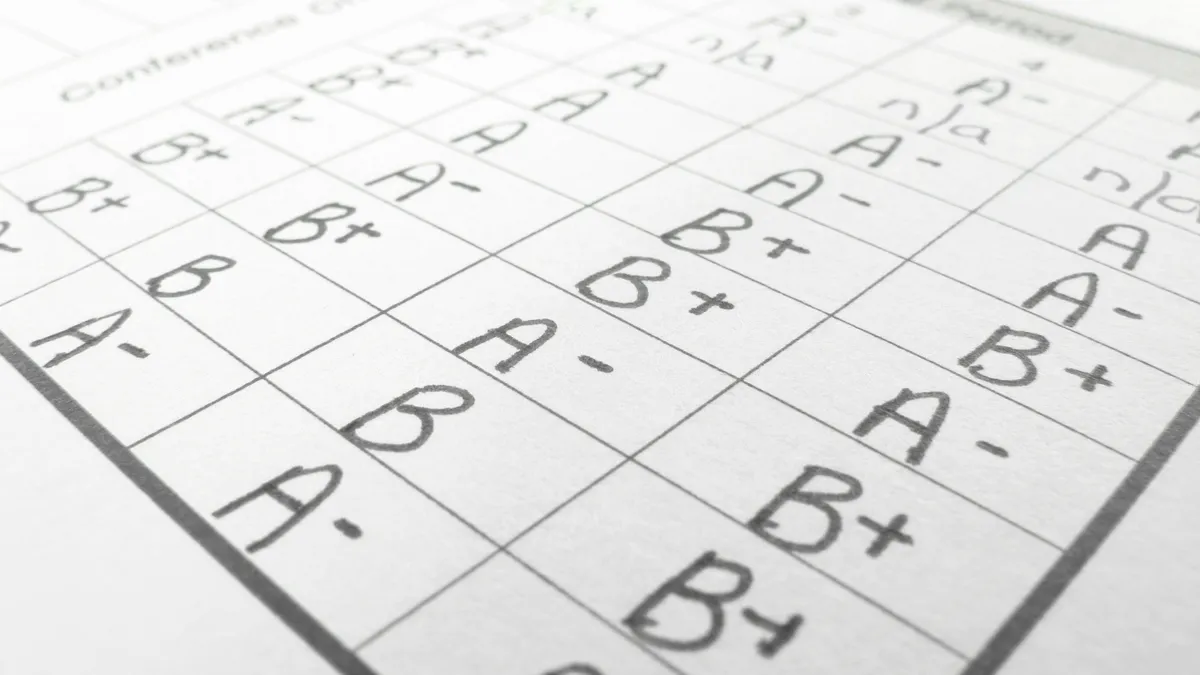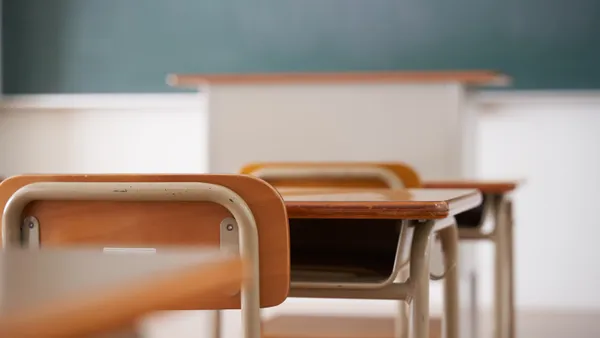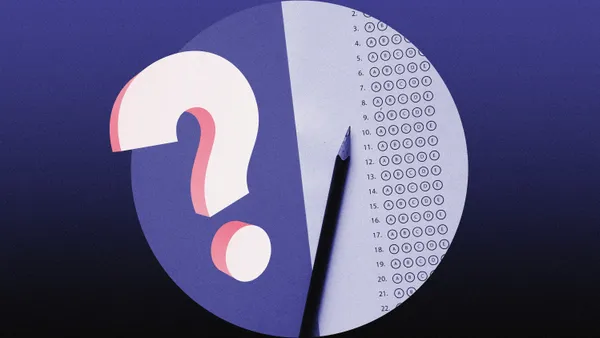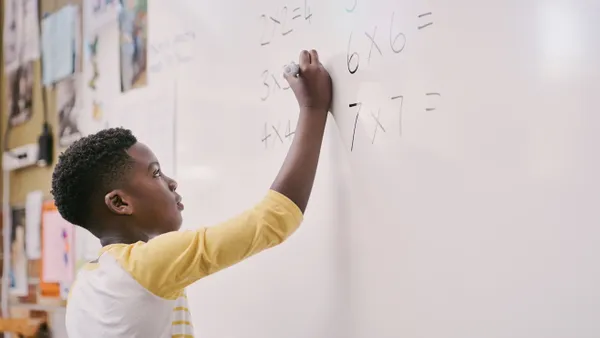Dive Brief:
- Education experts are examining alternative ways of grading that are more equitable and foster a better learning environment than the traditional letter grading, percentages and weighted assignments students and teachers are accustomed to.
- There are many concerns around post-pandemic learning loss and negative consequences the health crisis had on students’ social-emotional learning, but returning to standard grading practices “is not the way forward,” said Sarah Beck, a professor of English education at New York University’s Steinhardt School of Culture, Education, and Human Development.
- “We still need to keep track of what students are learning, but I think that giving students more flexibility in how they demonstrate their knowledge and asking for more interaction in the assessment process is really important,” Beck said.
Dive Insight:
Beck points to dialogic writing assessment as one way to reimagine grading. This method of writing assessment is an alternative approach to writing conferences with a student and their teacher and peers, where instead of teachers looking at a student’s finished draft, the student is actually talking about their writing process during the conference. This allows teachers to intervene in the writing process, suggesting immediate adjustments and observing how the student implements them.
In her previous research, Beck has found that dialogic assessment helps teachers identify strengths and challenges that are not evident in students’ writing alone. She added that this practice can be incorporated into any subject, not just English.
What matters is that students receive usable and legible feedback, Beck emphasized. In dialogical assessment, students receive immediate feedback, which they can readily incorporate while teachers observe.
The problem with traditional grading, Beck said, is that a number isn't really feedback. She added that the assessment process has become dehumanized, because schools are automating grading through software systems.
“There's the risk that students will get focused on the data and how they're being tracked, if they have enough points. And they'll start to think of this as one more kind of data collection experience, and it's no longer really about learning,” Beck said.
Beck added that when designing an assessment system, it is crucial to consider students' context outside of school: Are they caretakers? Do they have a job? Is it reasonable to expect them to do homework?
Harvard University’s Derek Bok Center for Teaching and Learning provides an overview of other common alternatives to the traditional grading system, including:
- Specifications grading: The teacher designates different letter grades to bundles of assignments, and grades are based on the combination and number of assignments they complete.
- Contract grading: The criteria for grades are determined by an agreement between the teacher and students at the beginning of the term.
- Mastery grading: Grades are linked to how well students have met the course learning objectives.
- Ungrading: Students self-assess their learning and give themselves an overall grade at the end of a term based on their cumulative work. Teachers give feedback on individual assignments and choose whether to increase or decrease the student’s self-appointed grade.
For schools interested in implementing any alternative grading systems, Beck recommends having a communication plan to present the changes and rationale to parents.
She noted that a lot of parents who are used to traditional grading might be uncomfortable or confused if schools try to move away from these systems. She suggests that schools prepare themselves to answer questions about how this will impact students' transitions to the next stage of schooling.
“Assessment is a relational process, so not only do we need to not forget that, we need to bring that more to the center of the assessment process right now,” Beck said.












